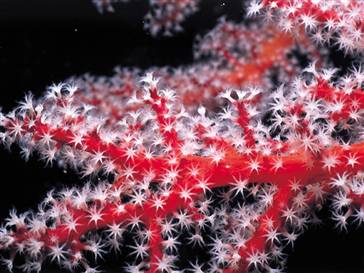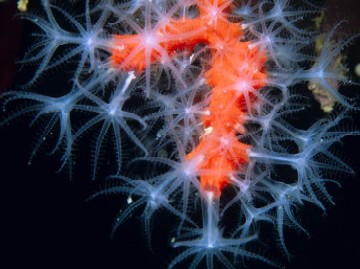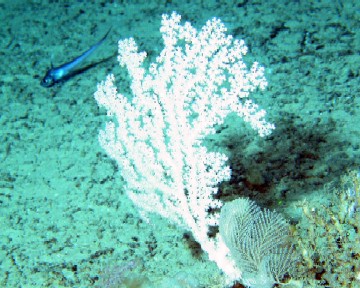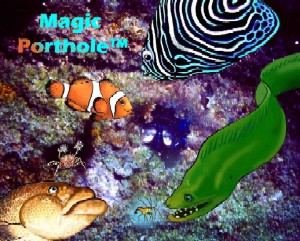Navigation
New Security for Coral Reefs: Red and Pink Corals Get United Nations Trade Protection
Trade in red and pink corals prized as jewelry for 5,000 years will be restricted to try to help the species recover after drastic over-exploitation, a United Nations wildlife conference, the Convention on International Trade in Endangered Species (CITES), agreed on June 15, 2007.
 |
| Corallium Photo Sea Web |
Trade in red and pink corals prized as jewelry for 5,000 years will be restricted to try to help the species recover after drastic over-exploitation, a United Nations wildlife conference, the Convention on International Trade in Endangered Species (CITES), agreed on June 15, 2007.
Countries at the Convention on International Trade in Endangered Species (CITES) voted 62 to 28 to start regulating export of corals, now harvested mainly in the Mediterranean and Western Pacific in a business worth millions of dollars.
"Regulation of trade is necessary to ensure they do not become threatened with extinction," said Andrew Bruckner, a US official who authored the proposal at the June 3-15 talks. He said that current harvesting was depleting stocks.
 |
| Corallium Jewelry Photo SeaWeb |
Necklaces made of the red and pink corals, collectively known as Corallium, can cost up to US$20,000. Many other species of coral are already protected by CITES.
"Corallium, the most valuable of the precious corals, has been fished for over 5,000 years," the US proposal said, adding that millions of items and thousands of kilos (pounds) a year were traded internationally.
The decision, imposing restrictions on international trade, will take effect in 18 months' time partly because of worries by southern European producers that they would need time to adapt to new trade rules.
Over-harvesting and other threats including pollution, trawling of the seabed by fishing vessels and global warming are among threats to the corals, found from the tropics to temperate waters.
Conservationists hailed the decision. "This is the best possible decision to start getting the trade in these corals under some form of international control," said Ernie Cooper, a coral trade expert from TRAFFIC, the wildlife trade monitoring network.
 |
| Over the past several years, the popularity of precious corals for jewelry, fashion, and décor has permeated markets from Asia and Europe to the United States. Such strong consumer interest threatens coral reefs, yet offers a unique opportunity for us to play a role in saving them. Photo from Sea Web by G. Marola 2007 |
Seaweb, a conservation group, also applauded the decision and said that raw red coral sold for US$100 to $900 per kg at auction. It said the Italian town of Torre del Greco, a centre of the trade, made coral profits of US$174 million in 1999 alone.
CITES is one part of a global drive to help protect species, and is increasingly looking at commercial types such as corals, fish and timber alongside efforts to safeguard iconic animals such as tigers and elephants.
June 14, 2007 Story by Alister Doyle, Environment Correspondent, Reuters
From SeaWeb: http://www.seaweb.org:
 |
| Deep sea coral habitat: As global fisheries are depleted, commercial fishing vessels move into deeper water to exploit fish and crustacean species that are frequently associated with complex coral structures. Since deepwater reefs are not visible to the general public, dissemination of information through the media and the education system is vital in order to create empathy for their protection Sandra Brooke took these photographs during her research expedition to examine deep sea habitat in the Florida Straits and to raise awareness of the perilous situation facing such deep sea coral ecosystems. Photo by Sandra Brooke Oregon Institute of Marine Biology |
Red and pink coral are the most valuable of all precious corals which are used to make jewelry such as necklaces and earrings as well as home decor items like objets d'art, and even lamp stands. Such demand is driving exploitation and threatening their survival and fishers are now targeting deeper waters using bottom trawls –one of the world’s most destructive fishing methods.
Learn more about coral reefs and what you can do to help preserve them at Horizon International’s
Magic Porthole™ Preview at www.magicporthole.org.
 |
Magic Porthole™ takes you into the fascinating world of coral reefs with videos, photographs, artistically rendered reef creatures who serve as “pals” and guides, sustainable environment contests, and games to enjoy while making discoveries about the lives of boxing crabs, moray eels, sharks, and many other creatures who are part of the fascinating and fragile life of coral reefs.
Components existing and planned are designed to closely tie-in offline and online experiences. They include collectible card games, sustainable environment contests, books, toys, DVDs, and a TV series.
Horizon has developed Magic Porthole™ with a Planning Grant from The National Science Foundation for Informal Science Education, and support from Peter Haje (former Executive Vice President and General Counsel, Time Warner), Helen Haje, other individuals, several supporters for Horizon’s filming in Bonaire (by Oscar-winning cinematographer Nick Caloyianis), and substantial contributions of talent and services.
Museums, aquariums and other entities are collaborating with Horizon’s Magic Porthole™ project including the American Museum of Natural History, Museum of Science, the Smithsonian Institution Ocean Hall and Ocean Portal, NOAA/NOS, and many others.
What is particularly exciting is that Magic Porthole’s approach provides the framework Horizon and others can apply to engage children in many subjects. Magic Porthole™ will build skills for questioning, analysis, understanding and addressing environmental issues, knowledge of environmental processes and systems, and the willingness and ability to act on their own conclusions to protect environmental quality. As children discover the intricate interconnected life in coral reefs, they will better appreciate symbiotic relationships and how all life is interconnected.
Search
Latest articles
Agriculture
- World Water Week: Healthy ecosystems essential to human health: from coronavirus to malnutrition Online session Wednesday 24 August 17:00-18:20
- World Water Week: Healthy ecosystems essential to human health: from coronavirus to malnutrition Online session Wednesday 24 August 17:00-18:20
Air Pollution
- "Water and Sanitation-Related Diseases and the Changing Environment: Challenges, Interventions, and Preventive Measures" Volume 2 Is Now Available
- Global Innovation Exchange Co-Created by Horizon International, USAID, Bill and Melinda Gates Foundation and Others
Biodiversity
- It is time for international mobilization against climate change
- World Water Week: Healthy ecosystems essential to human health: from coronavirus to malnutrition Online session Wednesday 24 August 17:00-18:20
Desertification
- World Water Week: Healthy ecosystems essential to human health: from coronavirus to malnutrition Online session Wednesday 24 August 17:00-18:20
- UN Food Systems Summit Receives Over 1,200 Ideas to Help Meet Sustainable Development Goals
Endangered Species
- Mangrove Action Project Collaborates to Restore and Preserve Mangrove Ecosystems
- Coral Research in Palau offers a “Glimmer of Hope”
Energy
- Global Innovation Exchange Co-Created by Horizon International, USAID, Bill and Melinda Gates Foundation and Others
- Wildlife Preservation in Southeast Nova Scotia
Exhibits
- Global Innovation Exchange Co-Created by Horizon International, USAID, Bill and Melinda Gates Foundation and Others
- Coral Reefs
Forests
- NASA Satellites Reveal Major Shifts in Global Freshwater Updated June 2020
- Global Innovation Exchange Co-Created by Horizon International, USAID, Bill and Melinda Gates Foundation and Others
Global Climate Change
- It is time for international mobilization against climate change
- It is time for international mobilization against climate change
Global Health
- World Water Week: Healthy ecosystems essential to human health: from coronavirus to malnutrition Online session Wednesday 24 August 17:00-18:20
- More than 400 schoolgirls, family and teachers rescued from Afghanistan by small coalition
Industry
- "Water and Sanitation-Related Diseases and the Changing Environment: Challenges, Interventions, and Preventive Measures" Volume 2 Is Now Available
- Global Innovation Exchange Co-Created by Horizon International, USAID, Bill and Melinda Gates Foundation and Others
Natural Disaster Relief
- STOP ATTACKS ON HEALTH CARE IN UKRAINE
- Global Innovation Exchange Co-Created by Horizon International, USAID, Bill and Melinda Gates Foundation and Others
News and Special Reports
- World Water Week: Healthy ecosystems essential to human health: from coronavirus to malnutrition Online session Wednesday 24 August 17:00-18:20
- STOP ATTACKS ON HEALTH CARE IN UKRAINE
Oceans, Coral Reefs
- World Water Week: Healthy ecosystems essential to human health: from coronavirus to malnutrition Online session Wednesday 24 August 17:00-18:20
- Mangrove Action Project Collaborates to Restore and Preserve Mangrove Ecosystems
Pollution
- Zakaria Ouedraogo of Burkina Faso Produces Film “Nzoue Fiyen: Water Not Drinkable”
- "Water and Sanitation-Related Diseases and the Changing Environment: Challenges, Interventions, and Preventive Measures" Volume 2 Is Now Available
Population
- "Water and Sanitation-Related Diseases and the Changing Environment: Challenges, Interventions, and Preventive Measures" Volume 2 Is Now Available
- "Water and Sanitation-Related Diseases and the Changing Environment: Challenges, Interventions, and Preventive Measures" Volume 2 Is Now Available
Public Health
- Honouring the visionary behind India’s sanitation revolution
- Honouring the visionary behind India’s sanitation revolution
Rivers
- World Water Week: Healthy ecosystems essential to human health: from coronavirus to malnutrition Online session Wednesday 24 August 17:00-18:20
- Mangrove Action Project Collaborates to Restore and Preserve Mangrove Ecosystems
Sanitation
- Honouring the visionary behind India’s sanitation revolution
- Honouring the visionary behind India’s sanitation revolution
Toxic Chemicals
- "Water and Sanitation-Related Diseases and the Changing Environment: Challenges, Interventions, and Preventive Measures" Volume 2 Is Now Available
- Actions to Prevent Polluted Drinking Water in the United States
Transportation
- "Water and Sanitation-Related Diseases and the Changing Environment: Challenges, Interventions, and Preventive Measures" Volume 2 Is Now Available
- Urbanization Provides Opportunities for Transition to a Green Economy, Says New Report
Waste Management
- Honouring the visionary behind India’s sanitation revolution
- Honouring the visionary behind India’s sanitation revolution
Water
- Honouring the visionary behind India’s sanitation revolution
- Honouring the visionary behind India’s sanitation revolution
Water and Sanitation
- Honouring the visionary behind India’s sanitation revolution
- Honouring the visionary behind India’s sanitation revolution

